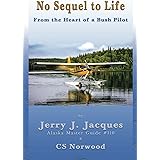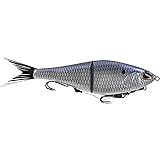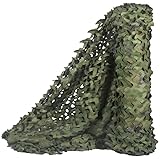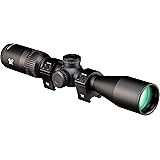Mastering the Survival Swedish Torch: Efficient Cooking with Limited Wood
Imagine a scenario: the sun has set, the air grows crisp, and hunger pangs begin. You need a warm meal, but your woodpile is meager—perhaps just a single small log. In such moments, the traditional roaring campfire might seem like an impossible luxury. However, as demonstrated in the insightful video above, there exists a highly efficient method for cooking and boiling water with minimal fuel: the Swedish torch. This ingenious survival technique can genuinely be a game-changer, ensuring that vital tasks like preparing food can be accomplished even when resources are scarce.
The core principle of the Swedish torch, also known as a Swedish fire log or Canadian candle, is its ability to burn from the inside out. This unique combustion pattern allows a single piece of wood to provide a stable, long-lasting heat source, perfect for setting a pot directly on top. It stands in stark contrast to an open fire, which often requires constant feeding and attention, especially for cooking.
The Ingenious Design of a Survival Fire Log
The construction of a Swedish torch is elegantly simple, yet remarkably effective. As illustrated in the video, the process begins with selecting a suitable log. For optimal results, a piece of seasoned hardwood is often preferred, as it tends to burn longer and hotter. Once the log is prepared, it is typically cut to a manageable height, usually around 12 to 18 inches, depending on the intended use and available wood.
The crucial step involves making vertical cuts into the log. Traditionally, four cuts are made, dividing the log into quarters or even sixths, without cutting all the way through to the bottom. These cuts create channels within the log. Furthermore, a small amount of wood is often shaved from the inner faces of these segments. This minor alteration serves a significant purpose: it creates air gaps when the pieces are reassembled, facilitating airflow which is vital for sustained combustion.
Subsequently, the segments of the log are bound back together. Wire, as demonstrated, is an excellent choice for this task due to its heat resistance and strength. Natural cordage, if available and sturdy enough, could also be considered, though it must be monitored for burning. The binding ensures that the log maintains its structure as it burns, allowing the internal fire to develop and spread downwards.
Why the Swedish Torch Excels in Fuel Efficiency
The efficiency of the Swedish torch largely stems from its self-feeding mechanism. Once ignited, often from the top or by stuffing tinder into the internal channels, the fire begins to consume the wood from the inside. Hot coals and embers are naturally pulled downwards by gravity, reigniting the wood below. This creates a continuous, self-sustaining burn that can last for several hours from a single log.
In a traditional campfire setting, wood is typically consumed much more rapidly. Heat is often lost to the open air, and the burning process is exposed to wind, which can hasten fuel consumption. Conversely, with a Swedish torch, the outer shell of the log acts as an insulator, directing heat upwards and concentrating it for cooking. This focused heat application is far more efficient when the objective is to boil water or cook food quickly, rather than simply providing ambient warmth.
Setting Up Your Outdoor Cooking Station
Once the Swedish torch has been properly constructed and securely bound, the next phase involves ignition. The video succinctly shows the fire being started and allowed to catch effectively. For successful ignition, finely shredded tinder, such as birch bark, fatwood shavings, or even cotton balls soaked in petroleum jelly, can be placed within the central channels of the log. Small kindling is then added to establish a strong initial flame.
Patience is a virtue during this stage. The fire needs to be thoroughly established within the internal structure of the log. It is crucial for the internal surfaces to become fully engulfed and for coals to begin forming. Only when a stable, glowing internal fire is observed should cooking commence. A pot or skillet can then be carefully placed directly onto the top of the burning log, utilizing the flat, stable surface provided by the design.
This method offers several distinct advantages for outdoor cooking. Firstly, the stable platform negates the need for elaborate pot hangers or tripods. Secondly, the contained nature of the fire reduces the risk of embers escaping, making it a safer option in certain environments. Lastly, the consistent heat output ensures more predictable cooking times, a valuable asset in survival situations where energy and time are at a premium.
Beyond the Basics: Maximizing Your Survival Cooking Fire
To truly master the Swedish torch for survival cooking and camping, several additional considerations can enhance its performance and utility.
Selecting the Right Wood for a Long-Lasting Burn
The type of wood chosen significantly impacts the burn time and heat output. Dense hardwoods such as oak, maple, birch, or hickory are generally preferred. These woods possess higher energy density and a slower burn rate compared to softer woods like pine or fir. While softwoods can ignite more easily, they will be consumed much faster, diminishing the long-lasting benefit of the Swedish torch.
Safety Precautions for Efficient Fire Management
Even with a contained fire source, safety remains paramount. The Swedish torch, though stable, generates significant heat. It must always be placed on bare earth, rock, or a fire-resistant surface, away from any flammable materials such as dry leaves, grass, or tents. A cleared area around the log, extending at least a few feet in all directions, is strongly recommended. Furthermore, a water source or a shovel for smothering embers should always be kept nearby.
Versatile Applications in Bushcraft and Emergency Preparedness
The utility of the Swedish torch extends beyond simple cooking. It can be utilized for boiling water to make it potable, a critical survival function. The intense, focused heat is also effective for sterilizing tools or for providing a localized heat source in a shelter. For signaling in emergencies, the steady column of smoke it can produce might be beneficial, particularly during daylight hours.
The method is particularly advantageous in wet conditions, as the internal burn is shielded from light rain and wind. This makes it a reliable choice when traditional ground fires are difficult to maintain. Consequently, it represents a highly adaptable skill for bushcraft enthusiasts, preppers, and anyone venturing into the wilderness where resources might be limited and efficient fire management is essential for survival.











